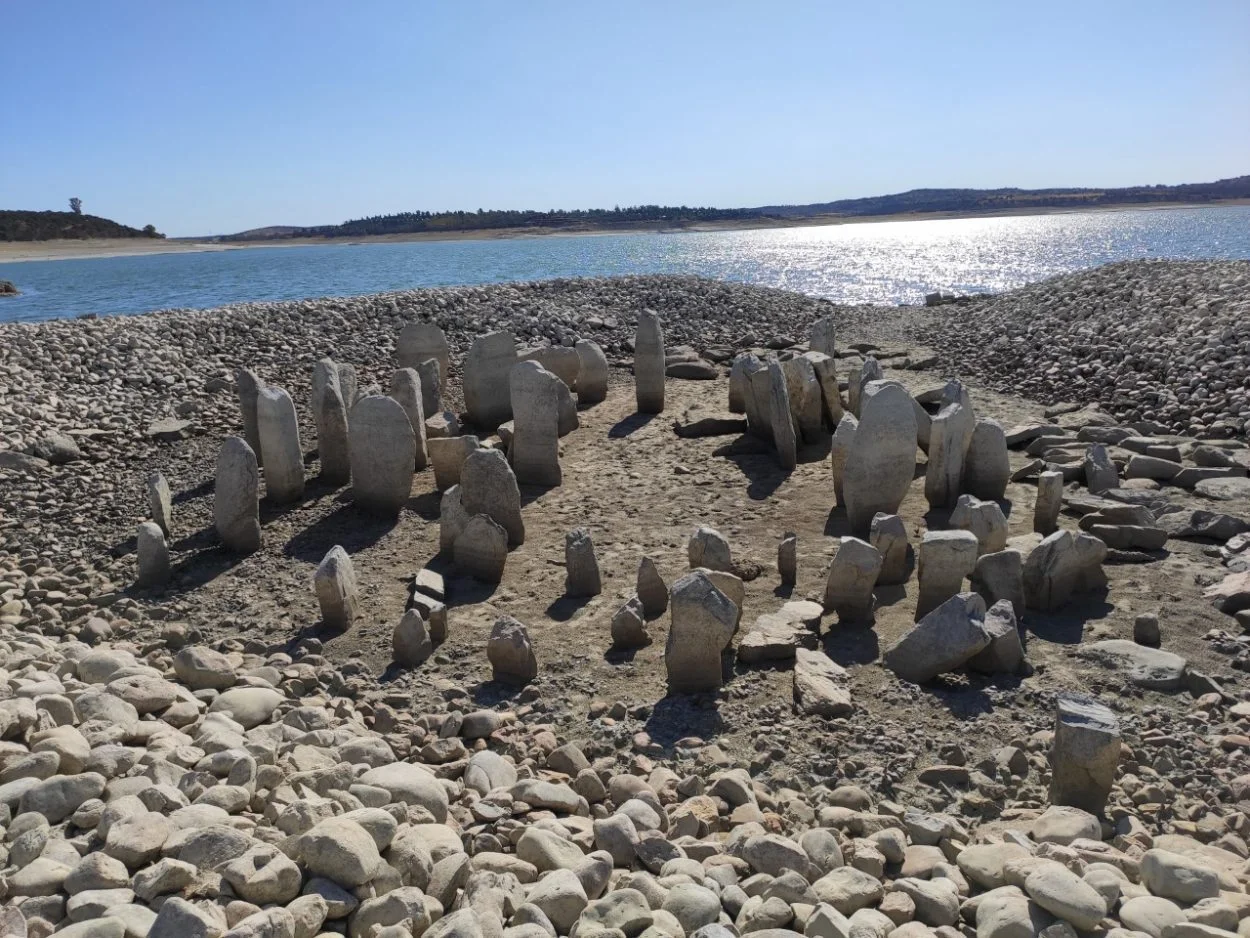Severe droughts in Spain have caused a drop in the water levels of the Valdecañas reservoir, revealing the Dolmen of Guadalperal, also known as the Spanish Stonehenge for its resemblance to Stonehenge in England.
The Dolmen of Guadalperal is a megalithic monument dating from 5,000 BC in Peraleda de la Mata, a town in the region of Campo Arañuelo in Spain.
The dolmen contains 150 orthostat granite stones, placed in a vertical arrangement that forms an ovoid chamber. This is accessed via a corridor with a large menhir at the entrance. The chamber consists of 140 stones originally covered with a mound, surrounded by another circular ring that contained the upper mound.
The monument was discovered in 1926, during a research and excavation project led by the German archaeologist Hugo Obermaier between 1925 and 1927. In 1963, construction of the Valdecañas reservoir inundated the monument, which has since damaged the monument by eroding the stones and their engravings.
According to state officials, the reservoir level has dropped to 28% of capacity because of one of the worst recorded droughts, leaving the Iberian Peninsula at its driest in 1,200 years according to a study published in the Nature Geoscience journal.
Archaeologists are using the opportunity to study the monument, while the Raíces de Peralêda Cultural Association has launched a petition to move the monument and preserve what remains. Already the petition has reached 45,682 signatures out of a target of 50,000 as of 19/08/2022.
Angel Castaño, who lives near the reservoir and serves as the president of a Spanish cultural group, told the website the Local, “We grew up hearing about the legend of the treasure hidden beneath the lake and now we finally get to view them.”
Header Image Credit : Pleonr – CC BY-SA 4.0





